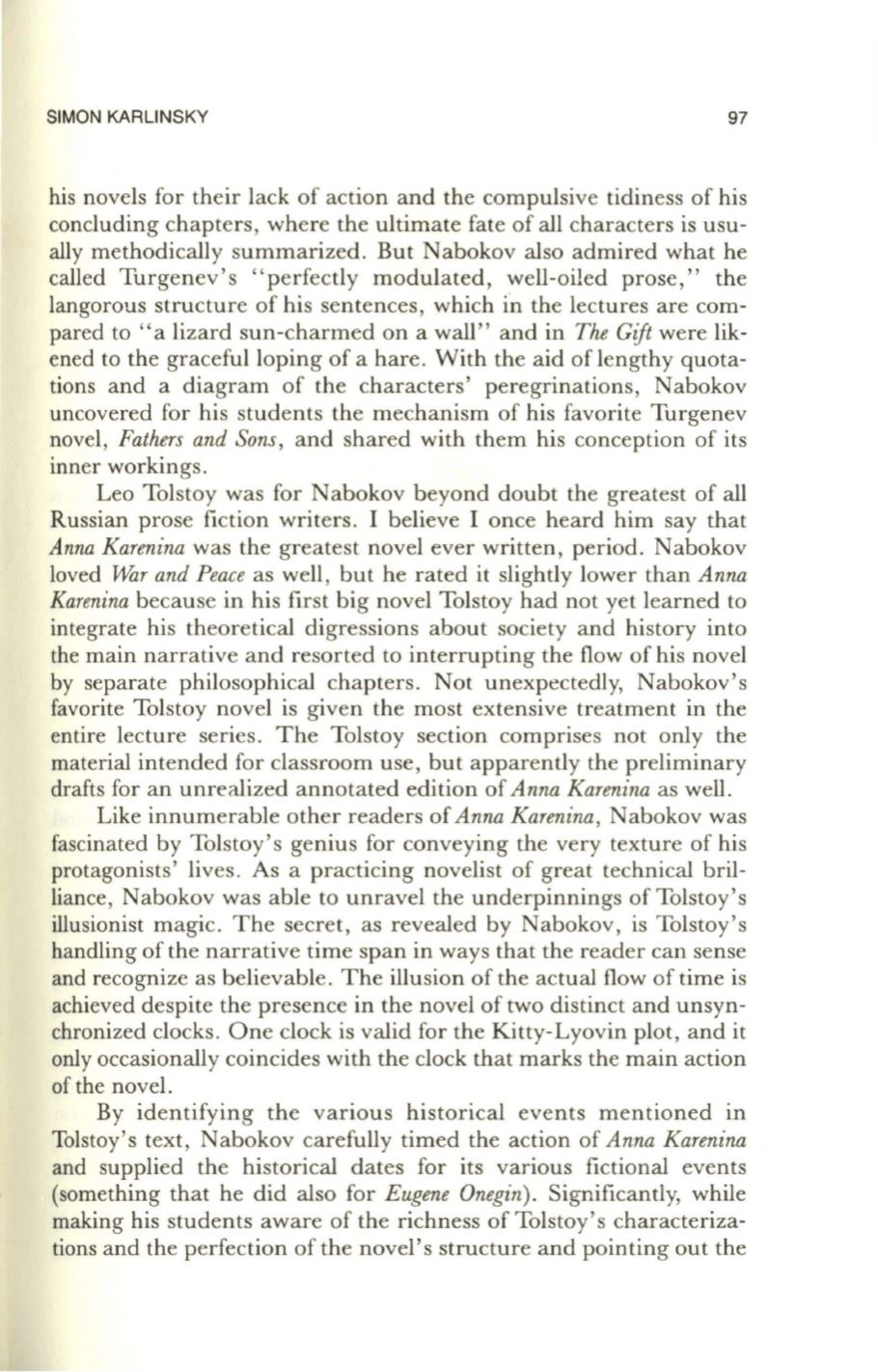
SIMON KARLINSKY
97
his novels for their lack of action and the compulsive tidiness of his
concluding chapters, where the ultimate fate of all characters is usu–
ally methodically summarized. But Nabokov also admired what he
called Turgenev 's "perfectly modulated, well-oiled prose," the
langorous structure of his sentences, which in the lectures are com–
pared to "a lizard sun-charmed on a wall" and in
The Gift
were lik–
ened to the graceful loping of a hare. With the aid of lengthy quota–
tions and a diagram of the characters' peregrinations, Nabokov
uncovered for his students the mechanism of his favorite Turgenev
novel,
Fathers and Sons,
and shared with them his conception of its
inner workings .
Leo Tolstoy was for Nabokov beyond doubt the greatest of all
Russian prose fiction writers. I believe I once heard him say that
Anna Karenina
was the greatest novel ever written, period. Nabokov
loved
Vlizr and Peace
as well , but he rated it slightly lower than
Anna
Karenina
because in his first big novel Tolstoy had not yet learned to
integrate his theoretical digressions about society and history into
the main narrative and resorted to interrupting the flow of his novel
by separate philosophical chapters. Not unexpectedly, Nabokov's
favorite Tolstoy novel is given the most extensive treatment in the
entire lecture series. The Tolstoy section comprises not only the
material intended for classroom use, but apparently the preliminary
drafts for an unrealized annotated edition of
Anna Karenina
as well.
Like innumerable other readers of
Anna Karenina,
Nabokov was
fascinated by Tolstoy 's genius for conveying the very texture of his
protagonists ' lives . As a practicing novelist of great technical bril–
liance, Nabokov was able to unravel the underpinnings of Tolstoy's
illusionist magic . The secret, as revealed by Nabokov, is Tolstoy's
handling of the narrative time span in ways that the reader can sense
and recognize as believable. The illusion of the actual flow of time is
achieved despite the presence in the novel of two distinct and unsyn–
chronized clocks. One clock is valid for the Kitty-Lyovin plot, and it
only occasionally coincides with the clock that marks the main action
of the novel.
By identifying the various historical events mentioned in
Tolstoy 's text, Nabokov carefully timed the action of
Anna Karenina
and supplied the historical dates for its various fictional events
(something that he did also for
Eugene Onegin).
Significantly, while
making his students aware of the richness of Tolstoy's characteriza–
tions and the perfection of the novel's structure and pointing out the


